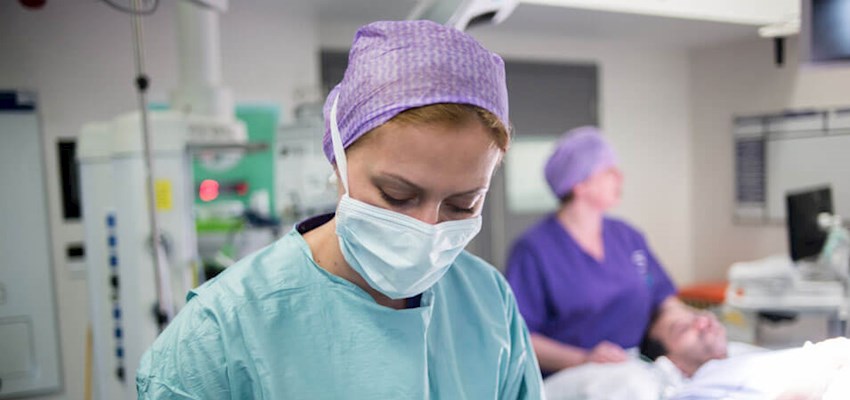Chemoembolisation (TACE)
TransCATHETER arterial chemoembolisation
A highly targeted form of chemotherapy that treats liver cancer by delivering the drug directly to the tumour
What is transcatheter arterial chemoembolisation?
Transcatheter Arterial Chemoembolisation (TACE) is a type of chemotherapy treatment used to treat tumours in the liver. During this procedure a catheter (thin tube) is inserted to your femoral artery (the main blood vessel in your groin), this tube is passed along the artery to the hepatic artery (the main blood vessel that carries blood to the liver).
Once the catheter is in place chemotherapy drugs are injected directly into your liver and small plastic beads or a gel is injected into your blood vessels, to slow down the growth of the tumours.
TACE treatment will not be suitable for everyone with liver tumours. Your consultant and medical team can discuss TACE treatment with you in more detail and if this is a suitable treatment option
Need to know
-
What happens during treatment? icon plus
Your consultant will give you a local anaesthetic to numb the area they are going to treat. They will then pass a thin, plastic tube (catheter) through your groin and into an artery. They inject dye through the catheter - this might leave a metallic taste in your mouth or give you a warm feeling.
The dye highlights on the X-ray which blood vessels are supplying your tumour. Once your consultant has identified the blood vessels, they inject the chemotherapy medication and an embolic agent (usually a gel or plastic beads) which cuts off the tumour's blood and oxygen supply.
-
How to prepare icon plus
Like all procedures, there may be some risks and side effects involved. Your consultant will explain these to you and answer any questions you may have.
They'll probably ask you not to eat and anything for six hours before your procedure. If you're on any sort of medication, please make sure your consultant knows in advance. -
After treatment icon plus
You'll be cared for in hospital for one to two days after your treatment. During this time, it's normal to feel nauseous and some discomfort. We can give you pain relief if you need it. You might also have a fever and not much of an appetite. This could carry on for about a week.
Try not to get the dressing on your groin too wet. It's fine to have a shower but don't have a bath. Your consultant will let you know when you can get back to your usual routine.
Our oncologists




Our locations
From complex cancer surgery to diagnostic tests and procedures, we provide exceptional oncology care across our network of hospitals, outpatient centres and specialist clinics.
-
The Wellington Liver & HPB Unit
The Wellington Liver & HPB Unit
North Building, Circus Road, St John's Wood
London NW8 6DP